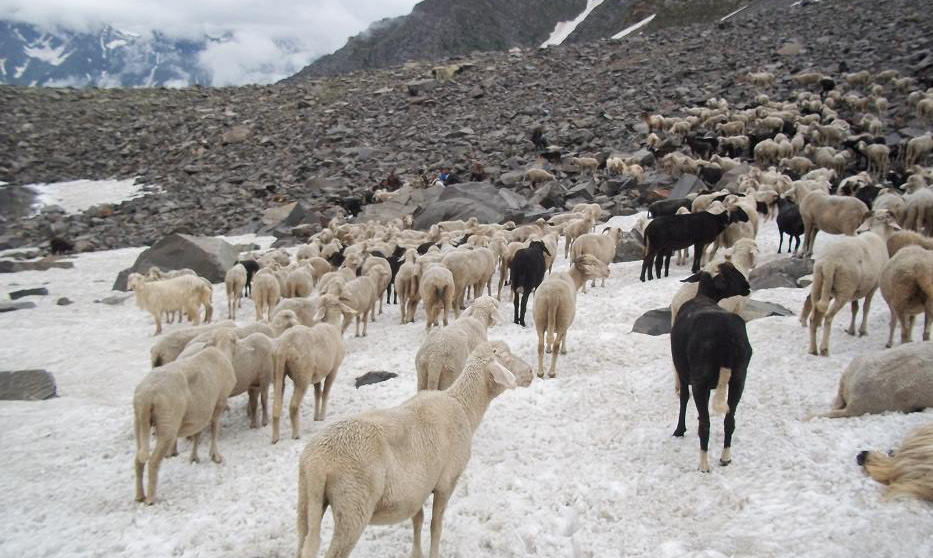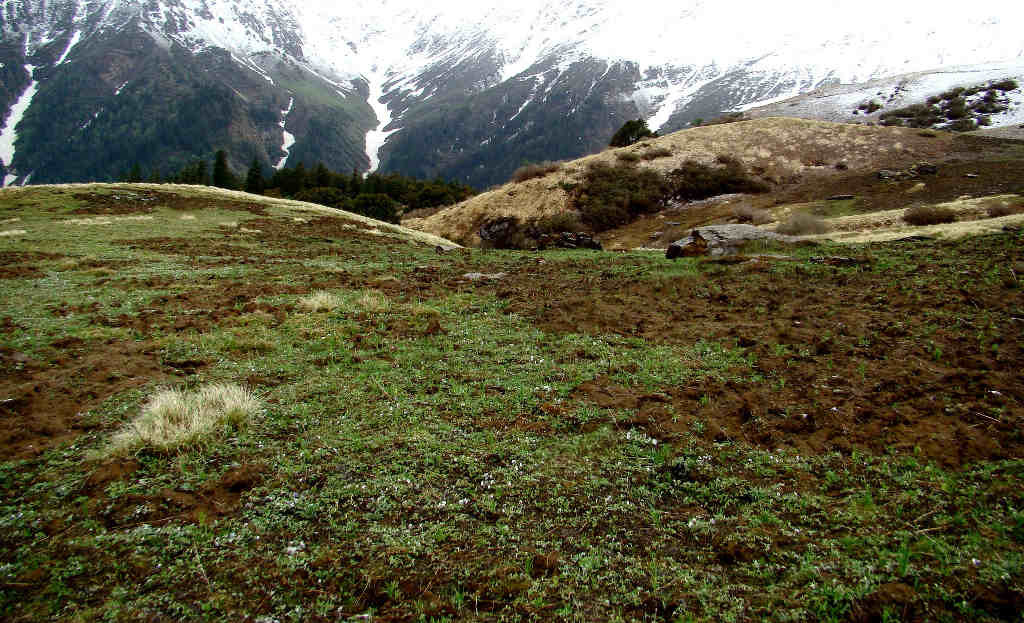
Known Pressures in GHNP
Until the 1960s human pressure on the Sainj-Tirthan area grew very slowly: activities were largely subsistence, with very limited export of natural resources beyond the area. Between villagers and the state, there was increasing intervention in British times, in a more centralized and bureaucratic system. Villagers sometimes accommodated officials, sometimes evaded or even resisted them. This long tradition made it very difficult to shift to today’s principle of participatory management in the area around GHNP.
Grazing Pressure
The first Himachal Wildlife Project report noted how difficult it was to census livestock, then recommended that all flocks be removed from any future GHNP. The research team’s resurvey in 1992 gave an estimate of 25,000 local sheep and goats in GHNP, plus 10,000 outsiders’ sheep and goats each summer.
Early research for GHNP saw domestic grazing as largely destructive of wildlife and habitats. New research results from Wildlife Institute of Institute (WII) scientists show that a landscape which represents both wide natural variation plus additional human-induced variation is probably a more advantageous habitat for many birds and smaller species. For example, WII biologists report that “Thaches seem to be ideal habitat for insect fauna, particularly butterflies.”
Different species prefer short or tall grass, but excessive grazing reduces number and variety of flowering plants on which butterflies depend.
Illegal Collection of Medicinal plants
Most observers agree that the second major pressure on GHNP’s diversity of species is the collection of medicinal herbs, as well as other minor forest products, especially morel mushrooms. This is a different issue from grazing rights, for administrators as well as local people, since the Forest Settlements from Anderson onward placed no restrictions on anyone’s collecting the herbs. Until the 1960s there was no significant commercial market for the major herbs, and no one anticipated that this would become a critical issue for the Park.
The original system of rights established in Anderson’s Settlement (1886) was restricted to a collecting season of only two months, 15 August to 15 October. But under the irresistible pull of the booming market, collectors expanded their work to the entire season, from April to November.
In consequence several species of herbs have become rapidly depleted, including: Picrorhiza kurroa, Jurinea macrocephala, Dactylorhiza hatagirea, Aconitum heterophyllum are critically endangered (CR); Dioscorea deltoidea, Nardostachys grandiflora, Podophyllum hexandrum, Texus wallichiana are endangered (EN)
The Problem of Poaching
Hunting, the other local system of harvesting the natural wealth of the region, underwent basic restrictions in the same years. The number of gun licenses for crop protection from wild animals increased considerably in the first years after Independence, when the colonial fear of political strife was removed. They were issued by the District Magistrate. India-wide, commercial hunting accelerated in the 1940s- 60s, but it is unclear whether the Sainj-Tirthan region was affected. “Inadequate wildlife staff, a strictly commercial approach to forestry, the expanding road network and access to crop protection guns led to another phase of indiscriminate hunting in the 1960-1980 period.”
In 1982 most hunting was banned in Himachal; the ban was specifically imposed in GHNP when it was notified in 1984.




